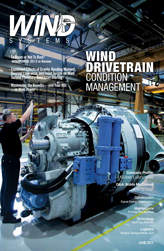What is this thing called supply chain management? Sometimes the term seems so vast and multifaceted that it is hard to get your head around the concept. Let me give you my interpretation of what supply chain management is. I do not take full credit for this definition since I have had many influences throughout my 30 years in this industry. But I have boiled down supply chain management to mean:
Understanding how demand and supply variables influence the movement of material, information, and money within your organization; and using the proper tools and techniques to efficiently and responsively move material, information and money between your customers, your suppliers and your organization.
That rather long sentence captures the what supply chain management is. It also gives a blueprint on what to manage within the supply. The three things all companies must manage within their supply chain are material, information and money. Material is what makes up your product or service. It encompasses the raw material for the product all the way through the finished goods. It is the way you add value to sales. Information is equally as important as material. If material is the “what” in the scenario, information is the how and why. Handing information accurately and timely is critical for an optimized supply chain. Money, of course, is the measure of the value of your work. It is equal in importance to material and information. You can envision supply chain management as a three-legged stool, where each leg is of equal importance.
So how does one manage this three-legged stool? I like to break down the supply chain process into five separate functions built on a foundation. The foundation always comes first in any project, so let’s lay the groundwork.
One layer of foundation is the vision, mission, and values of the organization. Vision, mission, and values give the supply chain process the boundaries to work within. It creates, as I like to say, the forest in which to operate. A second layer is metrics. How are your company and your supply chain being measured? Metrics is the scorecard that lets you know not only how you are doing, but also how far away you are from achieving your goals. Finally, information technology is that binding agent of the foundation that ties it all together. IT assists you in doing your job, and connects all of the functions within the supply chain.
The five supply chain functions I mentioned are: customer service, inventory, supply, transportation and fulfillment.
I’m often asked why customer service is a function of supply chain management? Customer service sets the business rules that in many ways drive the demand and supply of the product. Rules in place can determine response times, inventory levels, configuration of the product, and many more supply chain variables.
Inventory needs to be planned and forecast. It is a major financial burden on a company but it is also necessary. I liken inventory to an insurance policy. You hope you never have to use it. But you have it if you need it. You need to have enough, but having too much is wasteful.
Supply is the function of making or buying what is needed for you product. The supply plan is derived from customer service, and inventory policy. It has to be both efficient and responsive to support the company’s goals.
Transportation is the movement of material within the supply chain. This can be a rather large expense for some companies. It is also influenced by customer and inventory policy. Most companies have different transportation strategies based on product and customer type. In other words, they do not use a cookie cutter approach to transportation but rather customize the solution to the requirement.
The last function is fulfillment. Warehousing and store locations are determined within this function. Of course transportation and fulfillment work hand in hand to determine the lowest total cost, and most responsive way to deliver the product.
To summarize, supply chain management is using customer service, inventory, supply, transportation and fulfillment planning, and execution to move material, inventory and money to support your organizations goals. Sounds simple right? Well, it’s sort of like my golf game. When it works, it’s a thing of beauty. But it needs constant attention and practice. Even then, I’ll still hit some bad shots. But as my father told me once… “It’s not how well you hit your shot after a good shot., It’s how well you hit it after a bad shot.”
Much like supply chain management.


































